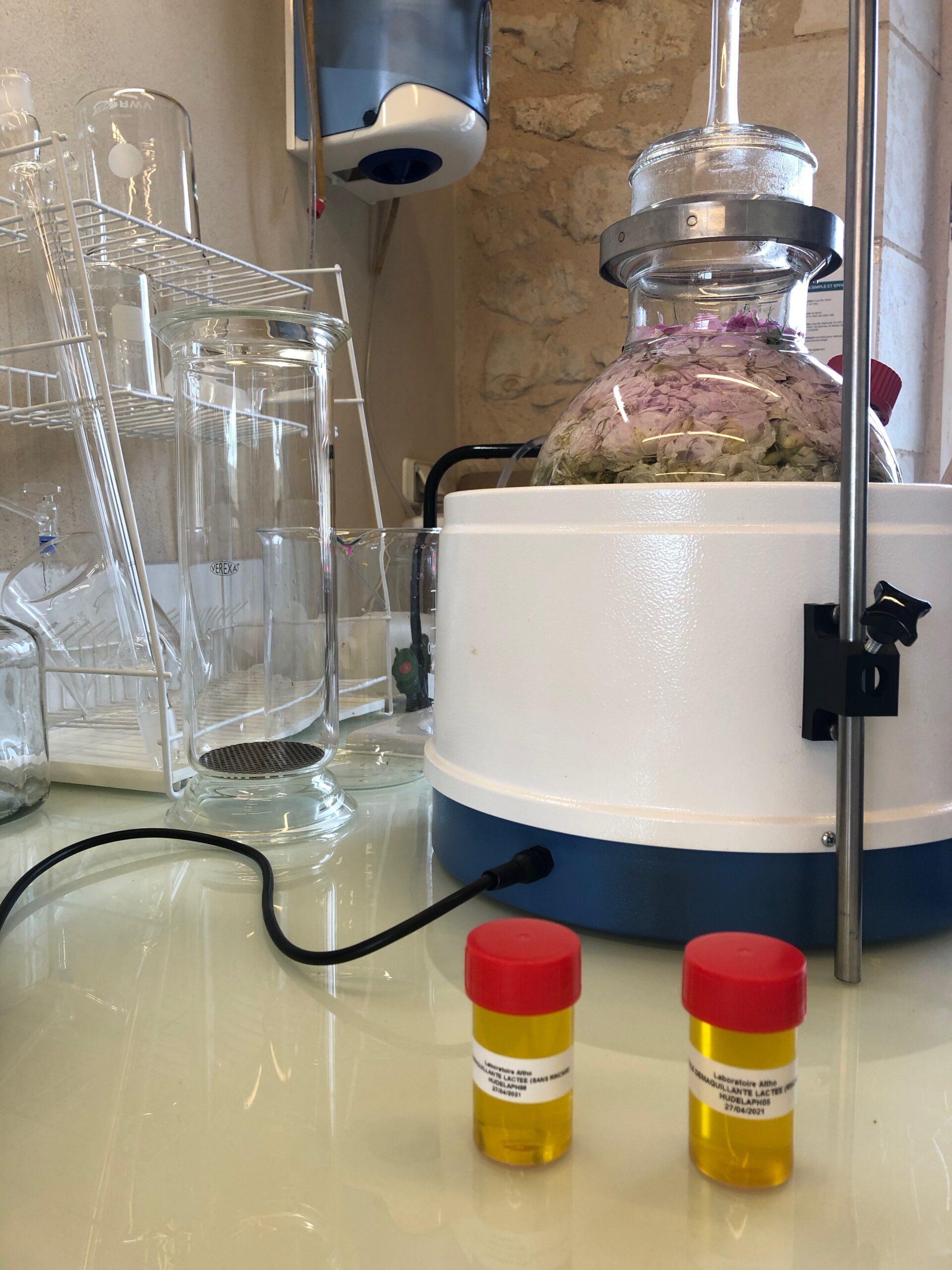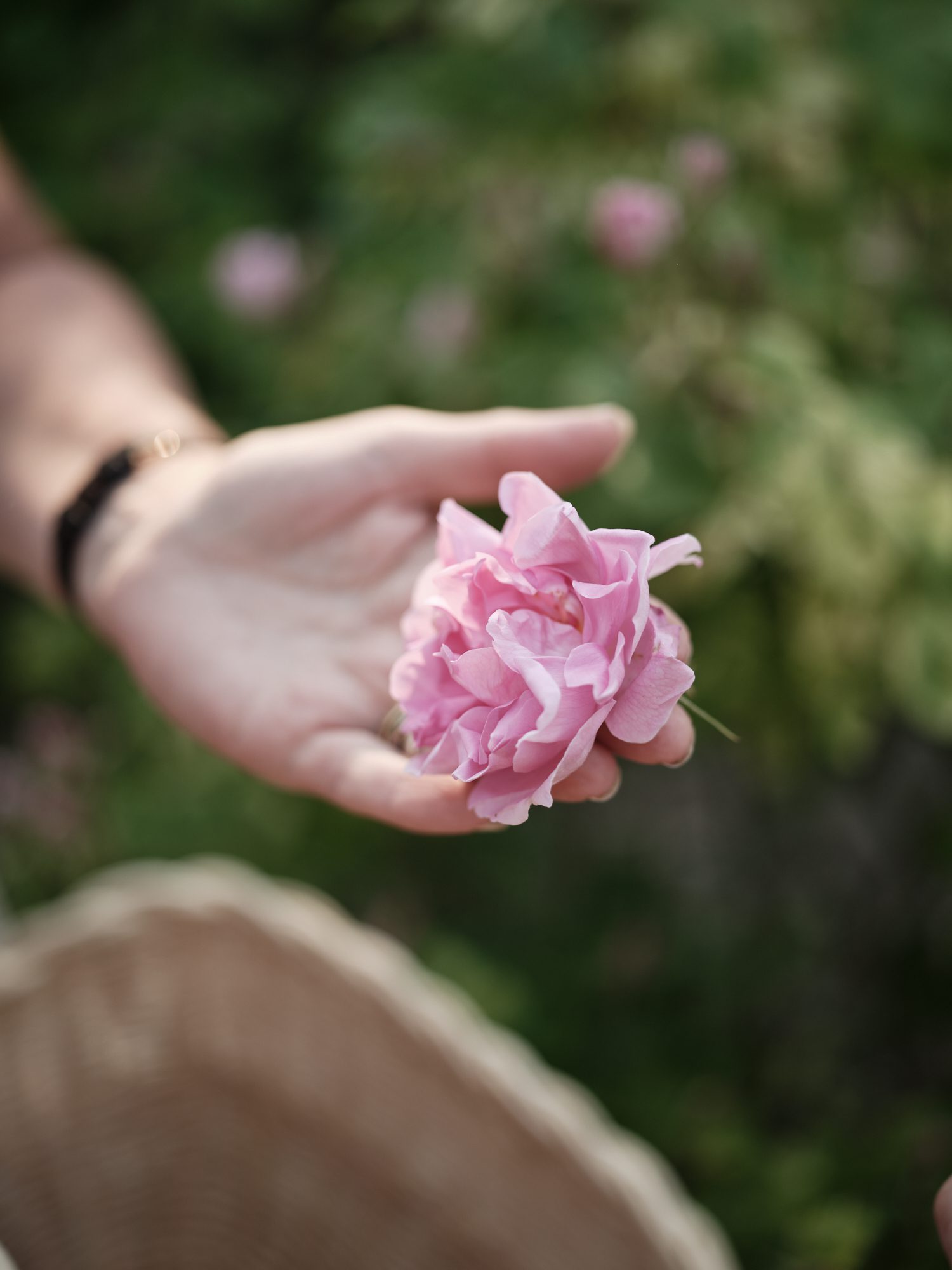
The metamorphosis of the rose
The Rosa-Rosae plants grafted on a rootstock “Rosa Laxa”, known for its resistance to limestone. They grew without any chemical treatments or fertilizers and are weeded by hand. The bare roots were planted on a south-west facing slope and on clay-limestone soils that have not been cultivated for over fifty years. Their growth is encouraged by horsetail manure and organic fertilizer.
The bare roots of Rosa-Rosae have been planted on a south-west facing slope in clay-limestone soil
that has been left fallow for over 50 years.
The buds are picked by hand every morning,
at the first rays of the sun or late in the evening.
Measuring between 1.5 and 2 meters in height when fully grown, Damask roses are pruned twice a year: after flowering in August and before the start of the summer in March. The annual harvest of Rosa-Rosae takes place in May and June. The buds are picked by hand every morning at first light or late in the evening when their olfactory and biochemical components are richest.
The roses are transported and transformed into essential oils and hydrolats less than 50 km away by an organic laboratory certified by Agriculture Biologique and Cosmebio. They are distilled either in a copper or stainless steel still with pure water to obtain essences loaded with active molecules. With one kg of roses, Rosa-Rosae produces one liter of highly concentrated hydrolate and with 4,000 kg, one litre of essential oils.

The chromatograph analyses the main aromatic organic components
in each of the hydrolats and essential oils of Rosa-Rosae
The hydrolats and essential oils are systematically analyzed to identify their main aromatic organic components: citronellol, geraniol, nonadecane, nerol, etc. Chromatography allows us to verify the level of these components in each of the hydrolats and to favour the creation of unique blends. Our products, originating and transformed in France, are integrated on their production site in a high quality cosmetic without being degraded by transport and without having a negative impact on the environment.



The chromatograph analyses the main aromatic organic components
in each of the hydrolats and essential oils of Rosa-Rosae
Follow us :
Privacy policy | Legal Mentions | A website made by Les Mots de Mai

